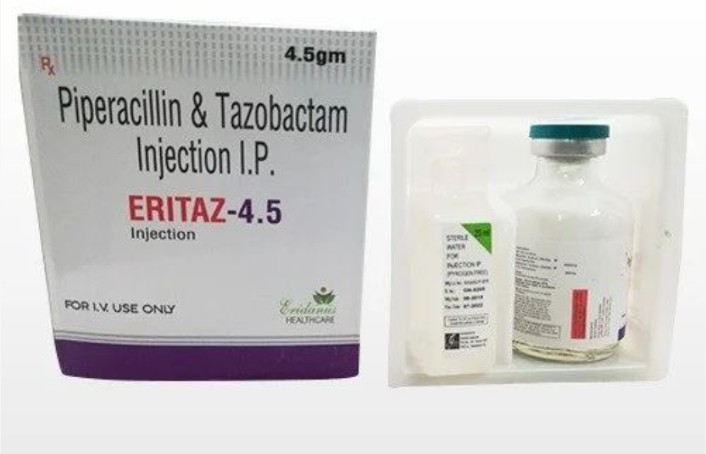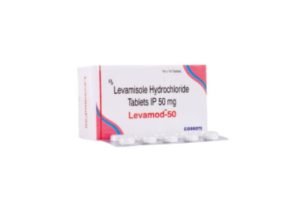
Here is a detailed overview of Piperacillin + Tazobactam:
Description:
Piperacillin + Tazobactam is a combination antibiotic therapy that leverages the broad-spectrum activity of Piperacillin, a ureidopenicillin, with Tazobactam, a beta-lactamase inhibitor. Tazobactam protects Piperacillin from degradation by beta-lactamase enzymes produced by certain bacteria, thereby extending its spectrum of activity to include many organisms resistant to Piperacillin alone.
Brand Names:
- Zosyn (most commonly used brand)
- Tazocin (another widely known brand)
Available Forms & Strengths:
- Injection (IV):
- Piperacillin/Tazobactam: Available in vials containing 2.25 g, 3.375 g, 4.5 g, or 5.25 g (containing 2 g Piperacillin and 0.25 g Tazobactam, 3 g Piperacillin and 0.375 g Tazobactam, 4 g Piperacillin and 0.5 g Tazobactam, or 4.5 g Piperacillin and 0.75 g Tazobactam).
Uses:
The combination is used for:
- Complex Infections: Including complicated intra-abdominal infections, complicated skin and soft tissue infections, and complicated urinary tract infections.
- Respiratory Tract Infections: Including hospital-acquired pneumonia and community-acquired pneumonia.
- Sepsis: Particularly in cases involving Gram-negative bacteria, including Pseudomonas aeruginosa.
- Bone and Joint Infections: Such as osteomyelitis.
- Gynecological Infections: Including infections following gynecological surgery.
Side Effects:
- Common:
- Gastrointestinal: Nausea, vomiting, diarrhea.
- Allergic Reactions: Rash, itching, and, rarely, anaphylaxis.
- Less Common:
- Hematologic: Leukopenia, thrombocytopenia, or anemia.
- Renal: Risk of nephrotoxicity, especially with high doses or pre-existing renal conditions.
- Hepatic: Elevated liver enzymes or liver dysfunction.
- Superinfections: Risk of overgrowth of non-susceptible organisms such as Clostridium difficile.
Dose:
- Adults:
- IV: Typically 3.375 g every 6-8 hours, depending on the severity and type of infection. For more severe infections, the dose may be increased to 4.5 g every 6-8 hours.
- Children:
- IV: Dosing is based on weight and the severity of the infection, typically 90 mg/kg/day divided into 3 or 4 doses, with adjustments based on the specific infection and clinical condition.
Contraindications:
- Hypersensitivity: Known allergy to Piperacillin, Tazobactam, or other beta-lactam antibiotics.
- Renal Impairment: Use with caution in patients with renal dysfunction due to the risk of drug accumulation and nephrotoxicity.
Drug Interactions:
- Anticoagulants: Piperacillin + Tazobactam may enhance the effects of anticoagulants such as warfarin.
- Other Antibiotics: Potential interactions with other antibiotics; monitoring for synergistic or antagonistic effects is recommended.
- Methotrexate: May affect renal clearance of methotrexate, increasing the risk of methotrexate toxicity.
Warnings:
- Allergic Reactions: Serious reactions, including anaphylaxis, may occur. Discontinue immediately and seek medical attention if severe allergic symptoms develop.
- Renal Monitoring: Regular monitoring of renal function is recommended, especially in patients with pre-existing renal issues.
- Superinfection Risk: Prolonged use can lead to overgrowth of resistant organisms or fungi.
Special Considerations:
- Pregnancy: Classified as Category B. Generally considered safe during pregnancy but should be used when clearly needed.
- Breastfeeding: Piperacillin and Tazobactam are excreted in breast milk in small amounts. Usually considered safe but monitoring for any adverse effects in the infant is advisable.
- Pediatric Use: Used in children with dosing adjusted based on weight and the severity of the infection.
Doctor Advised:
- Complete the full course of therapy as prescribed to ensure effectiveness and minimize the risk of resistance.
- Inform your healthcare provider of any history of allergic reactions to penicillins or beta-lactamase inhibitors.
- Monitor for side effects, such as gastrointestinal symptoms or signs of allergic reactions, and seek medical advice if necessary.
Conclusion:
Piperacillin + Tazobactam is an effective combination antibiotic used to treat a variety of serious infections, particularly those involving resistant Gram-negative bacteria. It offers broad-spectrum coverage and is useful in managing severe infections. As with all antibiotics, it should be used judiciously to prevent the development of resistance and monitored for potential side effects, especially in patients with renal impairment or those on multiple medications.







